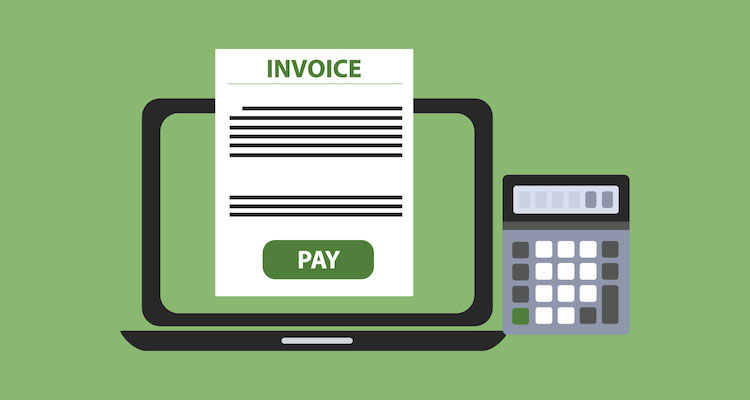Hello!
 Are you fed up with receiving invoices way past their due dates? Learn how to streamline your invoice process and get faster payments!
Are you fed up with receiving invoices way past their due dates? Learn how to streamline your invoice process and get faster payments!
A business will usually send a bill with payment terms to customers when they provide a product or service. This document indicates the total amount the customer must pay. A roofing contractor might send an invoice to inform the customer that they are due to pay USD$5,000 for a roof replacement job. Sometimes, an invoice might also include an itemized list listing the components of the total price.
Although an invoice is a legally binding contract, customers sometimes send invoice payments late than they expected. This can cause cash flow problems for your business and make it difficult to pay suppliers on schedule. There are many ways to deal with this.
Here are six steps you can take to get your invoices paid faster.
1. Craft a Clearer and more Accurate Invoice
In most cases, misunderstandings are a guarantee of failure. Invoicing is no different. Invoicing is a similar situation. Customers will often delay paying if the invoice does not contain important information about the order. If the due date for payment is not clearly stated in the invoice, then you can expect a delay or even non-payment. To speed up invoice payments, you must first create a professional and well-crafted invoice. This will clearly state how much is due and when it is due. This can be greatly assisted by business management software such as the one created by Jobber.
 Here is a list of information you need to include on your invoice:
Here is a list of information you need to include on your invoice:
- Business name, logo, and address
- Customer contact details
- Date issued
- Invoice title
- Payment terms
- Quantity and price of services or goods
- Total amount to pay
- Unique invoice number
 An invoice must include the payment terms. This section includes the due date for payment. It can vary from days to months, or upon receipt. It is usually highlighted. (1) You should agree with your client on the payment terms before issuing an invoice. This will allow you to negotiate if necessary.
An invoice must include the payment terms. This section includes the due date for payment. It can vary from days to months, or upon receipt. It is usually highlighted. (1) You should agree with your client on the payment terms before issuing an invoice. This will allow you to negotiate if necessary.
When is the best time for you to send an invoice? This section will answer your question.
2. Send Invoices Promptly
If you send the invoice late, there is no need to blame your clients.However, it is not always the best idea to send it as soon as you can.
When is the best time for you to send an invoice to your client? These are some tips that will help you.
-
Upon Purchase: Best for Selling Goods
It’s best to send an invoice when you purchase goods such as shoes or appliances. This means that you should expect payment right away. It is a good idea to offer payment options such as cash, credit or debit card, and check.
-
After Project Completion: Ideal for Short-Term Services
You should send an invoice if you offer short-term services such as roofing replacement or pest control. As both the client and vendor are likely to be in touch, this ensures that no one is scammed.
-
Pre-Determined Milestones are Best for Large-Scale Projects
 You might send invoices at certain milestones if your company participates in large-scale, complex projects such as house construction and custom software development.
You might send invoices at certain milestones if your company participates in large-scale, complex projects such as house construction and custom software development.
If you are building a house for someone, you might send invoices each time you finish a portion of the house. This will enable you to secure the funding necessary to continue the project. This gives the client more time for budgeting and does not force them to pay immediately.
-
Monthly/bi-weekly/weekly: Best for Long-Term Services
 You can only send invoices monthly, bi-weekly, or weekly if you are providing long-term services such as IT support or consulting. This is especially true for agencies that aim to establish long-term relationships.
You can only send invoices monthly, bi-weekly, or weekly if you are providing long-term services such as IT support or consulting. This is especially true for agencies that aim to establish long-term relationships.
Make sure you have all the terms and conditions in place before you send the first invoice to your client. Also, be clear about when and where you will be sending it. There is a high chance that they will not pay if they get an invoice from you out of the blue.
3. Always Follow up on Invoices
Many businesses don’t follow up with clients after the due date for an invoice. You never know, the client might have forgotten about the invoice or made an honest error. You should follow up on invoices by email or phone.
To help them remember, attach the original invoice when you send a follow-up email. If they call you, you can cite the unique invoice number if they need the goods or services from different companies.
Also read: How to choose The Perfect Domain Name
4. Ask for an Upfront Deposit
Although it may sound like a bad idea to ask for a deposit before starting a project, it is actually quite clever and beneficial for many reasons.
-
Reduces the Chance of Non-Payment
 Some clients disappear and stop all contact with you after they have received your goods or services. It is wise to ask for a deposit, as it helps you to weed out clients who could lead to non-payment.
Some clients disappear and stop all contact with you after they have received your goods or services. It is wise to ask for a deposit, as it helps you to weed out clients who could lead to non-payment.
-
Clients Become more Involved in the Job
Because the client has already invested money in the project, they are more likely to be involved as they want to increase the chances of the project succeeding.
-
You can get Working Capital by Depositing
Small businesses, especially, are more likely to invest in projects only to discover that they don’t have the money to continue operations. This can cause serious problems, and even lead to the termination of a job. However, you can get the capital required to kickstart your project by depositing.
Sometimes, it is not a good idea to ask for an upfront deposit. You should only charge a deposit to new clients. This is because you already know the clients who are trustworthy.
How much should you ask for a deposit? It’s common to ask for a deposit of at least 50% of the project cost. If the client insists, you can lower this limit.
5. Consider Accepting more Payment Methods
It’s easy for vendors to assume that clients are paying late because they lack integrity. In some cases, however, late payment can be caused by a lack of payment options. Consider expanding your payment options.
 Let’s take a closer look at which payment options your business should accept:
Let’s take a closer look at which payment options your business should accept:
- Cash: Although cash is the fastest method to get payment, it is also the least secure and convenient. It’s still a viable option for brick-and-mortar businesses.
- Check: In the same way as cash, checks are similar to checks in that you need physical contact with your client. They are however less expensive and more secure so you might consider adding them to your list of accepted payment options.
- Credit and Debit Cards: Customers consider credit and debit cards the easiest way to pay. It’s easy to accept this payment option. You will need to create an account with a payment processing company.
- Online Payments: Although it is rare, you might encounter customers who cannot pay in cash or check or do not have a debit or credit card. Accepting invoice payments via online payment portals such as PayPal is a good idea.
- Mobile Payments: A payment system can be set up that requires you to only read a code using your mobile phone. The client will then pay you. This is a very convenient option for both the vendor and the customer.
- Automatic Payments: Accepting automatic payments is a good idea if your business involves recurring payments (e.g. weekly, monthly, or quarterly). This is basically a way to transfer money from the client’s account to yours when the payment due date arrives.
6. Offer A Payment Plan
 Your clients may not have the ability to pay due to a lack of payment options. This is normal given the current world situation. Instead of asking for the full payment upfront, offer a plan.
Your clients may not have the ability to pay due to a lack of payment options. This is normal given the current world situation. Instead of asking for the full payment upfront, offer a plan.
You can, for example, charge 10% per month to avoid causing the client to rush to get the money.
Closing Thoughts
Customers who pay late can cause cash flow disruptions. This could cause delays in your payments to your suppliers, contractors, and yourself. Late invoice payments should be avoided as much as possible. While a large part of this depends on the behavior and actions of your clients, your strategy is crucial to the success of your invoicing.
Thank you!
Join us on social networks!
See you!






